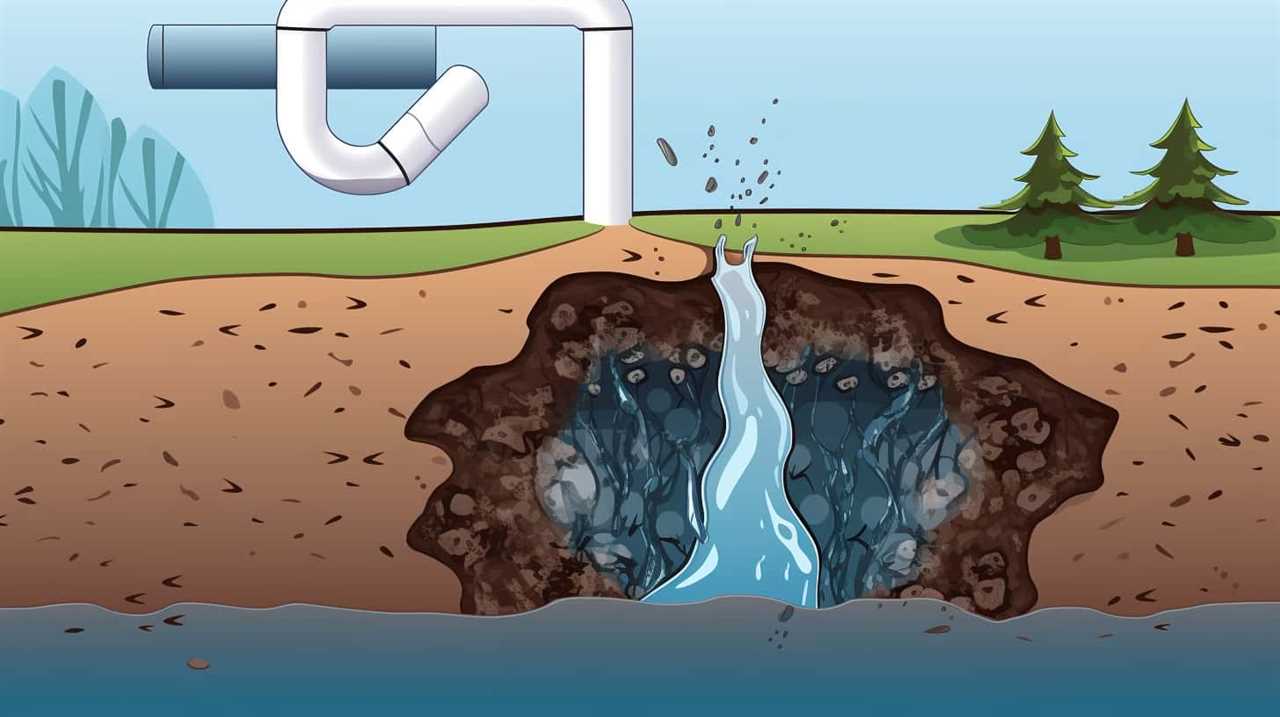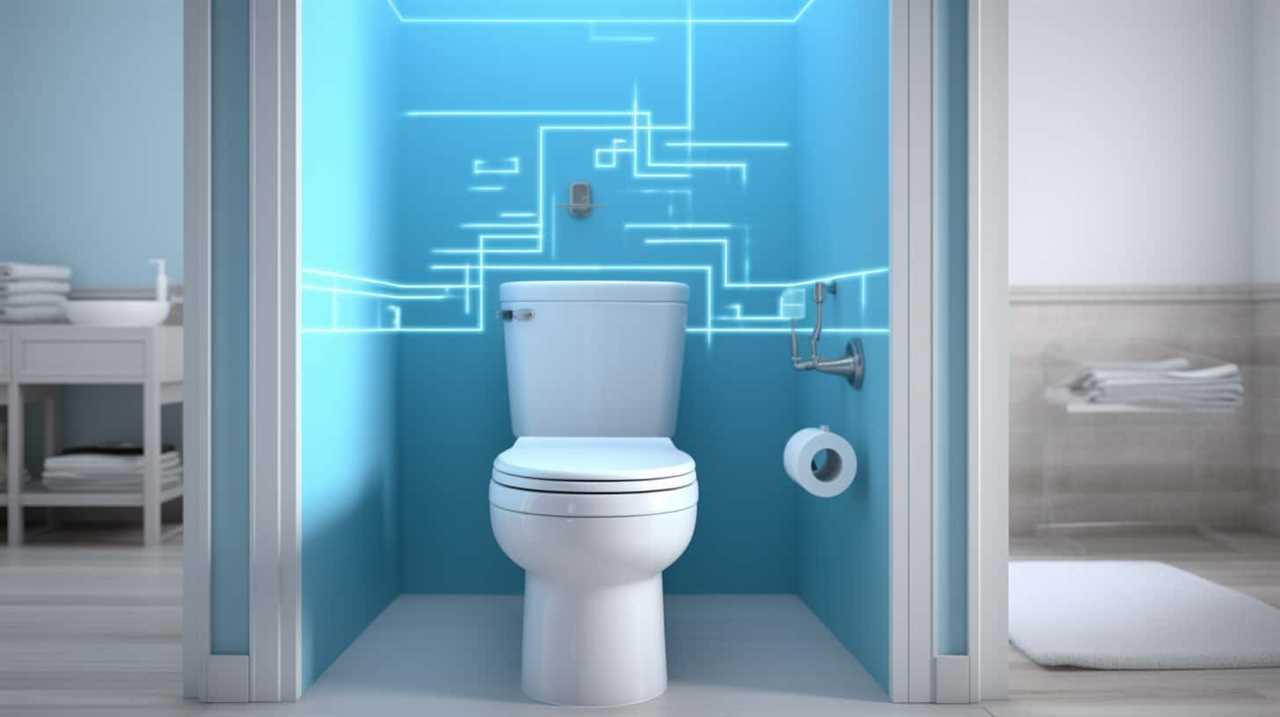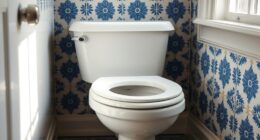We understand you may be wondering, “Why should we bother regrouting our bathroom tiles?” Allow us to explain.
Cracked or crumbling grout, discolored or stained grout, loose or missing tiles, mold or mildew growth, and water leakage or damage are all signs that it’s time to regrout. Neglecting this essential maintenance can lead to further problems down the line.
So, let’s dive into the details and explore when and how to tackle this task for a bathroom tile masterpiece.
Key Takeaways
- Signs of deteriorating grout include cracked or chipped grout lines, discoloration or staining, loose or missing grout, water seepage or leaks, and mold or mildew growth.
- Regrouting is important as it prevents water damage to walls and floors, enhances the appearance of the bathroom, increases the lifespan of the tiles, and eliminates the risk of mold and mildew.
- The frequency of regrouting depends on the quality of the initial grout job and is generally recommended every 5-10 years. Regular cleaning and maintenance can extend the time between regrouting, and regular inspection can help identify the need for regrouting.
- DIY regrouting can save money but requires proper tools and materials and is a time-consuming process. Professional regrouting ensures quality and durability as professionals have experience in handling different types of tiles.
Cracked or Crumbling Grout
When inspecting the condition of bathroom tiles, we often find cracked or crumbling grout that needs immediate attention. Cracked or crumbling grout not only looks unsightly, but it can also lead to further damage if left unattended. Thankfully, there are repair options available to fix this issue.

One option is to remove the damaged grout and replace it with new grout. This process involves carefully chiseling out the old grout and filling the gaps with fresh grout.
Another option is to use a grout repair kit, which typically includes a grout sealer and colorant to restore the appearance of the grout.
In addition to repair options, there are also preventative measures you can take to avoid future grout damage. Regularly cleaning and sealing the grout can help maintain its integrity and prevent cracks from forming. Additionally, avoiding harsh cleaning products and using a soft brush or sponge can help prevent grout erosion.
Discolored or Stained Grout
To address the issue of discolored or stained grout, we can explore various solutions that will restore the appearance of your bathroom tiles.

Over time, grout can become discolored due to dirt, mold, mildew, or even chemical reactions. One solution is to clean the grout thoroughly using a grout cleaner and a brush. This can help remove surface stains and discoloration.
However, if the stains are stubborn or deeply embedded, regrouting may be necessary. The regrouting process involves removing the old grout and replacing it with new grout, which will give your tiles a fresh and clean look.
To prevent future staining, it’s important to seal the grout after regrouting. Regular cleaning and maintenance, such as wiping down the tiles after each use, can also help keep your grout looking clean and stain-free.
Loose or Missing Tiles
We need to address the issue of loose or missing tiles in our bathroom. When tiles become loose or go missing, it not only affects the aesthetic appeal of the bathroom but also poses a potential safety hazard. To address this problem, we need to go through the regrouting process. First, we need to gather the necessary tools and materials, which include a grout saw, grout float, grout, and a sponge. The grout saw is used to remove the old grout, allowing us to replace it with new grout. The grout float helps us apply the new grout evenly, while the sponge is used to wipe away any excess grout. By following these steps and using the right tools, we can effectively regrout the bathroom tiles and ensure a secure and visually appealing bathroom.

| Tools and Materials | |||
|---|---|---|---|
| Grout Saw | Grout Float | Grout | Sponge |
Mold or Mildew Growth
To effectively address mold or mildew growth on bathroom tiles, we can use a mildew-resistant cleaner and a scrub brush. Here are three key steps to prevent mold growth and maintain a clean and healthy bathroom:
- Regular cleaning: Clean your bathroom tiles regularly to remove any dirt, grime, or soap scum that can promote mold growth. Use a mildew-resistant cleaner and a scrub brush to thoroughly clean the tiles and grout.
- Proper ventilation: Ensure that your bathroom is well-ventilated to prevent moisture buildup. Use exhaust fans or open windows during and after showering to allow excess moisture to escape.
- Dry thoroughly: After cleaning, make sure to dry the tiles and grout completely. Moisture is a breeding ground for mold and mildew, so it’s important to keep the bathroom dry.
By following these steps, you can effectively prevent mold growth and maintain a clean and healthy bathroom.
However, if you notice any signs of water leakage or damage, it’s important to address those issues promptly to prevent further mold growth.
Water Leakage or Damage
Addressing water leakage or damage is crucial when determining when to regrout bathroom tiles. Water leakage can cause significant damage to the underlying structure of the bathroom, leading to mold growth, weakened tiles, and even structural issues. Repairing water damage should be a priority to prevent further deterioration and ensure the longevity of your bathroom tiles. To help you understand the importance of addressing water leakage, let’s take a look at the potential consequences of leaving it unattended:

| Consequences of Water Leakage/Damage | |
|---|---|
| 1. Mold Growth | Mold can thrive in damp environments, leading to health issues and a foul odor. |
| 2. Weakened Tiles | Excessive water exposure can cause tiles to become loose or crack, compromising the integrity of the bathroom surface. |
| 3. Structural Issues | Prolonged water damage can weaken the structure of the bathroom, potentially leading to costly repairs. |
| 4. Increased Energy Bills | Water leakage can result in excessive moisture, making it harder for your bathroom to regulate temperature and increase energy consumption. |
Frequently Asked Questions
How Long Does It Typically Take to Regrout Bathroom Tiles?
On average, regrouting bathroom tiles typically takes a few hours to a couple of days, depending on the size of the area and the level of expertise. Following best practices for regrouting ensures a successful and long-lasting result.
Can I Regrout Over Existing Grout or Do I Need to Remove It Completely?
When regrouting bathroom tiles, it’s important to consider whether to regrout over existing grout or remove it completely. Removing the old grout will ensure a more thorough and long-lasting regrouting process, with benefits including improved aesthetics and increased durability.
What Tools and Materials Are Needed to Regrout Bathroom Tiles?
To regrout bathroom tiles, we need specific tools and materials. Some essential items include a grout removal tool, grout float, grout sealer, and new grout. Here are the steps to regrouting: remove old grout, clean the tiles, apply new grout, and seal it.
How Often Should Bathroom Tiles Be Regrouted?
We should regrout bathroom tiles every 1-2 years to maintain their integrity. Signs that grout needs attention include cracks, discoloration, and mold growth. Regularly resealing grout can also help prolong its lifespan.

Are There Any Specific Cleaning Products or Techniques Recommended to Prevent Mold and Mildew Growth After Regrouting?
To prevent mold and mildew growth after regrouting, we recommend using specific cleaning products and techniques. Cleaning with a mildew-resistant cleaner and regularly ventilating the bathroom can help maintain a clean and mold-free environment.
Conclusion
In conclusion, regrouting your bathroom tiles is necessary when you notice signs of:
- Cracked or crumbling grout
- Discolored or stained grout
- Loose or missing tiles
- Mold or mildew growth
- Water leakage or damage
These issues can’t only affect the appearance of your bathroom but also lead to further damage if left unattended.
Did you know that according to a survey, around 70% of homeowners fail to regrout their bathroom tiles until excessive damage has occurred?

Don’t wait, take action to maintain the beauty and integrity of your bathroom tiles.










